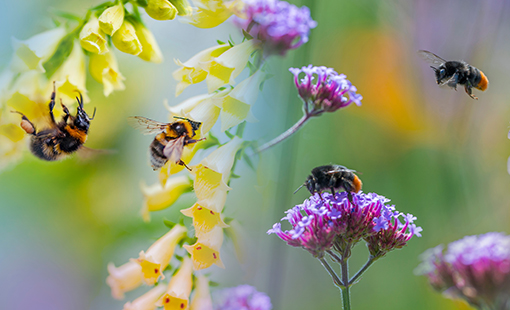
Why is Pollination Important
Virtually all of the world’s seed plants need to be pollinated. This is just as true for cone-bearing plants, such as pine trees, as for the more colorful and familiar flowering plants. Pollen, looking like insignificant yellow dust, bears a plant’s male sex cells and is a vital link in the reproductive cycle.
With adequate pollination, wildflowers:
- Reproduce and produce enough seeds for dispersal and propagation
- Maintain genetic diversity within a population
- Develop adequate fruits to entice seed dispersers
The Simple Truth: We Can’t Live Without Them!
Pollination is not just fascinating natural history. It is an essential ecological survival function. Without pollinators, the human race and all of earth’s terrestrial ecosystems would not survive. Of the 1,400 crop plants grown around the world, i.e., those that produce all of our food and plant-based industrial products, almost 80% require pollination by animals. Visits from bees and other pollinators also result in larger, more flavorful fruits and higher crop yields. In the United States alone, pollination of agricultural crops is valued at 10 billion dollars annually. Globally, pollination services are likely worth more than 3 trillion dollars.
- More than half of the world’s diet of fats and oils come from animal-pollinated plants; oil palm, canola, sunflowers, etc.
- More than 150 food crops in the U.S. depend on pollinators, including almost all fruit and grain crops.
- The USDA estimated that crops dependent on pollination are worth more than $10 billion per year.
Environmental Benefits of Pollination
Clean Air (Carbon Cycling/Sequestration)
Flowering plants produce breathable oxygen by utilizing the carbon dioxide produced by plants and animals as they respire. Levels of carbon dioxide in the atmosphere have been rapidly increasing in the last century, however, due to increased burning of fossil fuels and destruction of vital forests, the “earth’s lungs.” Pollinators are key to reproduction of wild plants in our fragmented global landscape. Without them, existing populations of plants would decline, even if soil, air, nutrients, and other life-sustaining elements were available.
Water and Soils
Flowering plants help to purify water and prevent erosion through roots that holds the soil in place, and foliage that buffers the impact of rain as it falls to the earth. The water cycle depends on plants to return moisture to the atmosphere, and plants depend on pollinators to help them reproduce.
Information courtesy of FS.Fed.us

 Adams Fairacre Farms
Adams Fairacre Farms